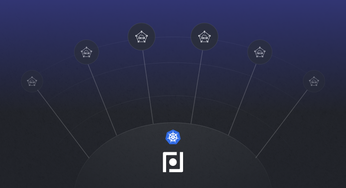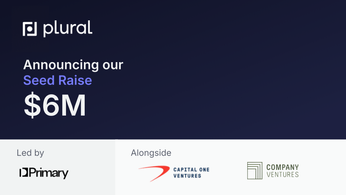
Is Kubernetes Worth It? A Practical Guide
Is Kubernetes worth it for your organization? Explore the benefits and challenges to determine if this powerful tool aligns with your business needs.
Table of Contents
Kubernetes is the leading container orchestration platform. But its complexity leaves many teams wondering: is Kubernetes worth it? This post explores the advantages and disadvantages of Kubernetes, weighing the benefits against the operational costs. We'll analyze real-world use cases, discuss budgetary concerns, and offer practical guidance to determine if Kubernetes aligns with your organization's needs. We'll also show how platforms like Plural simplify Kubernetes management, making it accessible to teams of all sizes. Is Kubernetes too complicated? Let's find out.
In this article, we’ll explore the pros and cons of Kubernetes so you can decide if it’s the right technology for your organization.
What are the Advantages of Using Kubernetes?
Key Takeaways
- Kubernetes is powerful but complex. Its robust orchestration capabilities shine for scaling microservices and managing complex deployments, but simpler alternatives may be more suitable for smaller projects or teams without dedicated DevOps resources.
- Evaluate the total cost of ownership (TCO) before committing to Kubernetes. Factor in infrastructure expenses, the need for specialized personnel, and the potential for vendor lock-in. Open-source doesn't eliminate costs, and the operational overhead can be substantial.
- Plural simplifies Kubernetes management. If your team needs the power of Kubernetes but wants to avoid the complexities of direct management, Plural offers a streamlined platform for deploying and managing applications with reduced operational overhead.
Scalability and Management of Microservices
Kubernetes simplifies scaling and managing microservices. One of its primary strengths is reliably managing multiple copies of a service—something other tools struggle with. Ensuring the reliability and availability of numerous interdependent services was a significant challenge before Kubernetes. Kubernetes automates this process, allowing you to easily scale your applications up or down based on demand. It also provides a robust network model for containers, bridging the gap between development and production environments for smoother deployments. This makes it much easier for development teams to deploy and manage complex applications.
The Kubernetes API and Ecosystem
The Kubernetes API is another significant advantage. This API provides access to a vast ecosystem of tools and integrations, extending Kubernetes’s functionality and allowing you to customize it to your organization's specific needs. Tools like Helm simplify deployments by packaging, configuring, and managing Kubernetes applications. This rich ecosystem, combined with the flexibility of the API, makes Kubernetes a versatile and powerful orchestration platform. For enterprise-grade management of your Kubernetes deployments, platforms like Plural offer a unified control plane and simplified workflows.
Industry Standard and Community Support
Kubernetes has become the industry standard for managing containerized applications across various cloud platforms. While it can be complex, no other technology has effectively challenged its dominance. This widespread adoption translates to a wealth of available resources, from detailed documentation to a large, active community providing support and sharing expertise. The significant investment in Kubernetes ensures its continued development and improvement. This strong community and industry backing provide valuable support for your team and contribute to the platform's long-term viability. If you're looking for a robust and well-supported container orchestration platform, Kubernetes is a solid choice.
One of the main advantages of using Kubernetes is its scalability. With Kubernetes, apps can be scaled up or down quickly and easily, allowing companies to optimize resources as needed. This makes it easy to react to changing demands and manage the cost of business operations. Kubernetes’ ability to automate many of the processes involved with deployment and management offers significant savings in terms of labor costs.
Project Size and Complexity
Kubernetes is undeniably powerful. Its robust architecture and comprehensive features make it ideal for managing complex containerized applications at scale. However, this power comes with complexity. As many developers have noted on Reddit, Kubernetes can be overkill for smaller projects or teams without dedicated DevOps expertise. The learning curve can be steep, and the initial setup and configuration can require significant time and resources. If your project is relatively small or your team lacks experience with container orchestration, the overhead of managing a Kubernetes cluster might outweigh its benefits. For instance, a simple web application with minimal scaling requirements might not necessitate the full power of Kubernetes.
Alternatives for Smaller Projects
If you're working on a smaller project, simpler alternatives might be a better fit. Consider platforms like Heroku, Google App Engine, or AWS Elastic Beanstalk. These platforms offer managed services that handle much of the underlying infrastructure and deployment complexity, allowing you to focus on building and shipping your application. For containerized applications, platforms like Google Cloud Run (as discussed by Ben Houston in his blog post) or AWS Fargate provide a serverless experience that simplifies deployment and scaling without requiring you to manage the underlying Kubernetes infrastructure. These alternatives can offer a more streamlined experience for smaller teams and projects with less demanding requirements. This can translate to faster development cycles and reduced operational overhead.
Cost Considerations and TCO
While Kubernetes itself is open-source, the total cost of ownership (TCO) can be higher than anticipated. InfoWorld highlights how the TCO of Kubernetes can sometimes exceed the benefits compared to traditional development methods. This is due to several factors, including infrastructure costs, personnel costs, and the need for specialized tooling. For example, managing a Kubernetes cluster often requires a dedicated team with expertise in areas like networking, security, and containerization. These specialized skills can command higher salaries, contributing to increased personnel costs.
Unexpected Infrastructure Costs
Running a production-ready Kubernetes cluster requires significant resources. You'll need multiple nodes for redundancy and scalability, along with supporting infrastructure for networking, storage, and load balancing. These infrastructure costs can quickly add up, especially as your application grows and requires more resources. As InfoWorld points out, these infrastructure demands contribute to a higher overall TCO. Consider the costs associated with provisioning and maintaining virtual machines, load balancers, and storage volumes in your chosen cloud environment. These costs can vary depending on your provider and the scale of your deployment.
Challenges in Testing and Vendor Lock-in
Testing and debugging applications within a Kubernetes environment can be more complex than in traditional environments. Reproducing issues and isolating problems across multiple containers and services can be challenging. Effective testing strategies and tools are essential for navigating this complexity. Additionally, while Kubernetes is open-source, choosing a specific cloud provider for your Kubernetes cluster can lead to vendor lock-in. Migrating your cluster to a different provider can be a complex and time-consuming process. This can limit your flexibility and potentially increase costs in the long run. Carefully consider the long-term implications of vendor lock-in before committing to a specific provider.
Maintenance and Operational Overhead
Maintaining a Kubernetes environment requires ongoing effort. You'll need to monitor the health of your cluster, apply updates and security patches, and tune performance as your application evolves. This operational overhead requires skilled personnel and specialized tools, which further contributes to the overall TCO. InfoWorld emphasizes the need for continuous monitoring, updates, and tuning, all of which require dedicated resources and expertise. Consider implementing robust monitoring and alerting systems to proactively identify and address potential issues. Automating tasks like updates and deployments can also help reduce operational overhead.
Kubernetes also provides a great deal of control over how applications are configured, which is beneficial for maintaining high availability. The platform allows for quick recovery from outages and lets you set limits on resource usage so that containers don’t consume too much of your system’s resources. In addition, Kubernetes is highly secure, offering access controls that let you restrict user access levels and isolate applications from one another.
Kubernetes is also highly secure and reliable due to its robust authentication system. It allows for role-based access control so only authorized personnel have access to specific areas of your environment. Furthermore, Kubernetes has the ability to automatically detect configuration changes in order to ensure all data remains safe throughout the lifecycle of any application or service running on it.
Additionally, Kubernetes provides an efficient way to manage and deploy cloud-native applications on multiple platforms. This makes it easier for developers to quickly create and deploy new features while also scaling existing ones with ease.
By being backed by a large open source community users have a relatively easy time solving problems they encounter due to the sheer number of experts available offering help and advice.
When Should Organizations Think Twice Before Investing in Kubernetes?
Kubernetes has a steep learning curve and requires dedicated management and engineering resources. Setting up and managing a Kubernetes cluster can be complicated and requires advanced infrastructure knowledge, including networking, load-balancing, and security. Small to medium-sized organizations with limited resources may struggle with the initial investment required to deploy and manage Kubernetes.
Organizations must also consider whether or not Kubernetes is worth their investment in terms of time, money, and effort. Kubernetes can be an incredibly powerful tool but only when it’s set up and managed properly. Investing in Kubernetes without the technical expertise to manage it can lead to poor deployment practices, security vulnerabilities, and application downtime.
Well it Depends
Kubernetes can be an excellent fit for large organizations with dedicated management and engineering resources. It is a powerful tool that solves many of the challenges organizations face as they scale their applications. However, small to medium-sized organizations may struggle with the initial investment and ongoing resource requirements necessary to manage Kubernetes.
Organizations must evaluate their individual needs and resources before investing in Kubernetes. While Kubernetes is a powerful tool, it may not be worth the investment for every organization. By carefully assessing your organization's needs, you can determine whether Kubernetes is a good fit for your business.
If you’re considering deploying open-source applications onto Kubernetes, it has never been easier to do so than with Plural. Our open-source platform requires minimal understanding of Kubernetes to deploy and manage your resources, which is unique for the ecosystem.
If you like what we’re doing here, head over to our GitHub and check out our code, or better yet, try your hand out at adding an application to our catalog.
Matching Kubernetes to Your Needs
Kubernetes is a powerful platform, but it's not a universal solution. It’s important to understand where Kubernetes excels and where its complexity might outweigh its benefits. Choosing the right tool for the job is crucial for efficient development and resource management.
When Kubernetes Shines
Kubernetes truly shines when you need to scale and manage multiple services. If your application architecture involves microservices or you anticipate significant growth, Kubernetes provides the tools to handle the complexity. Its ability to reliably manage numerous service copies, a task other orchestration tools often struggle with, makes it ideal for complex deployments. Kubernetes also offers a robust network model for containers, effectively bridging the gap between development and production environments. This ensures consistent behavior and simplifies the transition from development to deployment. As discussed in a Reddit thread on the value of Kubernetes, this scaling capability is a key differentiator. For applications that require high availability and fault tolerance, Kubernetes provides mechanisms for automatic failover and recovery, ensuring continuous operation.
When to Consider Alternatives
While powerful, Kubernetes has a steep learning curve. The same Reddit discussion highlights the consensus that Kubernetes can be overkill for smaller projects or teams without dedicated DevOps expertise. If your project is relatively small, has simple infrastructure needs, or your team lacks experience with container orchestration, the complexity of Kubernetes might introduce unnecessary overhead. In such cases, simpler alternatives like Docker Compose or Heroku might be more suitable, allowing you to focus on development rather than infrastructure management. For small projects or those with limited resources, exploring these alternatives can be a more efficient approach. These platforms often offer simpler deployment processes and managed infrastructure, reducing the operational burden on smaller teams.
Kubernetes and Plural: Simplifying Management at Scale
Managing Kubernetes effectively requires significant expertise and resources. As noted in an InfoWorld article, the setup and ongoing maintenance of a Kubernetes cluster can be complex, demanding advanced knowledge of infrastructure components like networking, load balancing, and security. This complexity can lead to increased operational costs and the need for specialized personnel.
How Plural Addresses Kubernetes Complexities
Plural simplifies Kubernetes management by providing a unified platform for deploying and managing applications on Kubernetes. Our open-source platform streamlines the process, requiring minimal Kubernetes expertise to deploy and manage your resources. This ease of use is a key differentiator in the Kubernetes ecosystem. Whether you're deploying a complex microservices application or a simple web service, Plural simplifies the workflow and reduces the operational burden. For example, our Stacks feature provides a Kubernetes-native way to manage infrastructure as code, simplifying tasks like provisioning and managing cloud resources. If you're looking to leverage the power of Kubernetes without the complexity, Plural offers a more accessible and efficient approach. We encourage you to explore our documentation and see how Plural can simplify your Kubernetes journey.
Related Articles
- Kubernetes Terminology: A 2023 Guide
- Kubernetes Mastery: DevOps Essential Guide
- Simplify DevOps with Managed Kubernetes Services
- Kubernetes API: Your Guide to Cluster Management
- Kubernetes Cost Optimization: Actionable Strategies
Frequently Asked Questions
Is Kubernetes right for my project? Kubernetes is a powerful tool, but its complexity can be overhead for smaller projects or teams lacking dedicated DevOps expertise. If your project is relatively small, has simple infrastructure needs, or your team is new to container orchestration, simpler alternatives like Docker Compose or Heroku might be more suitable. Kubernetes shines when scaling and managing multiple services, especially in microservices architectures or anticipated significant growth. Its robust network model and ability to manage numerous service copies make it ideal for complex deployments requiring high availability and fault tolerance.
What are the hidden costs of Kubernetes? While Kubernetes itself is open-source, the total cost of ownership can be substantial. Factor in infrastructure costs (virtual machines, load balancers, storage), personnel costs (specialized skills in networking, security, containerization), and the need for specialized tooling. Managing a production-ready Kubernetes cluster requires significant resources, and these costs escalate as your application grows.
How does Plural simplify Kubernetes management? Plural provides a unified, open-source platform that streamlines deploying and managing applications on Kubernetes. It simplifies workflows and reduces operational burden, requiring minimal Kubernetes expertise. Features like Stacks offer a Kubernetes-native way to manage infrastructure as code, further simplifying tasks like resource provisioning and management.
What are the challenges of testing in Kubernetes? Testing and debugging in Kubernetes can be more complex than in traditional environments. Reproducing issues and isolating problems across multiple containers and services requires effective testing strategies and tools. Also, while Kubernetes is open-source, choosing a specific cloud provider for your cluster can lead to vendor lock-in, potentially limiting flexibility and increasing long-term costs.
What kind of maintenance is required for a Kubernetes cluster? Maintaining a Kubernetes environment requires ongoing effort, including monitoring cluster health, applying updates and security patches, and tuning performance. This operational overhead necessitates skilled personnel and specialized tools, contributing to the total cost of ownership. Implementing robust monitoring and alerting systems, along with automating tasks like updates and deployments, can help mitigate this overhead.
Newsletter
Join the newsletter to receive the latest updates in your inbox.







